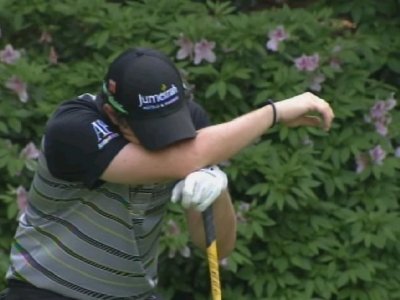Golf is like life in so many ways. We struggle, we get back up, and we continue to go forward. Maybe that is why the game has such an attraction for people, because it is constantly giving you hope for better things. You hit a bad shot and it drives you crazy, but out there somewhere that ball is screaming at you to come try again. Perhaps the next one will be better? But to improve at the game of golf long-term it is necessary to have a high patience level. Just like many other tasks, such as learning a language or playing an instrument, small steps must be taken and done in the right order, or you are constantly trying to compensate for a lack of basic fundamentals. This is most definitely the case in golf.
So as an instructor, I know that you will need to be patient as we work through the basics of the game. I often have people ask me how I have such great patience for teaching the game, and I simply reply that it is a prerequisite for being a good instructor. Simple, small tasks sometimes take time to achieve, but in the end your game will be better off if you can get with a good instructor, put your faith in them, and match their patience level.
In starting with beginners or people who are very novice at the game, I will begin with their grip. Nothing gets people more scared and jittery than a good grip change. Some of them have never really played, yet they act as if they have been holding the club like they do for decades. As a teacher and mentor of mine has said: “Discomfort is just feel on the move.” You need to push yourself a little and trust in what the instructor is doing, even if it doesn’t feel so good for a while. Repetition will breed a new and improved comfort level.
We then will move on to the set-up position and how to address the golf ball. This is where your past history of athletics is so important to me, as I will most certainly ask if you have played any other sports. The set-up in golf is an athletic position! Shoot a free throw, field a ground ball, or get ready for a tackle and you have been in a golf posture to some degree. Yet it is amazing how many incredible athletes set up to the golf ball as if they have no feel for how to make an athletic move. Make no mistake, swinging a golf club at high speed at a small object on the ground with a metal club is truly an athletic move. So get ready like an athlete every time you go to hit a shot. Your chances of making a good swing increase a whole bunch if you can get set for success.
Once a player is gripping the club and setting up like an athlete, we need to point their swing in the right direction! Golf is a target game, and as such it is important to have proper alignment. Most people have heard the theory of the “railroad tracks”, where your ball is on the top track and the feet and shoulders line up with the bottom track. I’m okay with that philosophy, but not for everyone. For instance, if you are a chronic slicer of the ball (left to right movement), I may aim you a bit to the right of the target to start bringing your swing in a different direction to fix your slice. Then, down the road, you can change it if you wish once your swing dynamics have changed. So there is no perfect way to line up, except to say that you need to line up to the target for YOUR ball flight so it ends up on the target every time. That’s good alignment.
Once the basic “pre-swing” fundamentals are in place, we will work on a very basic swinging motion to help you begin to understand the proper movements necessary to hit a golf ball. At this point, your patience may never be tested more, as we will spend some quality time hitting small, half shots. The reason for this is that I am a firm believer that if you can’t do something well at slow or half speed, how can you do it well at full speed? Taking some beginners and putting them into full swing mode is like taking a brand new driver and putting them in a race car and telling them to drive as fast as possible. A big crash is almost a guarantee! Understanding the role of your arms and body together is so crucial, but I promise you that you will hit the ball better long term and thank me later if you can master the small shots. The main drill I use is a “hinge, pivot, hold” drill used by renowned teacher Jim McLean and all of his teachers with new golfers. It teaches the basic hinging of the golf club going back, the small pivot required to bring the club back to the ball, and the full release and relaxed finish so common in good players. I have used it so many times with students and while they may struggle at first, it only takes one good shot for them to get it and the results usually take off from there. They leave the lesson having hit mostly small shots, but feeling like they learned and accomplished something in our time together.
In the end, my goal is to give students the fundamentals needed to succeed, and show them attention and patience throughout the process. If they give me that same attention and patience in return, they will see results, and I will have given them a little more of that hope that we all want in golf.




